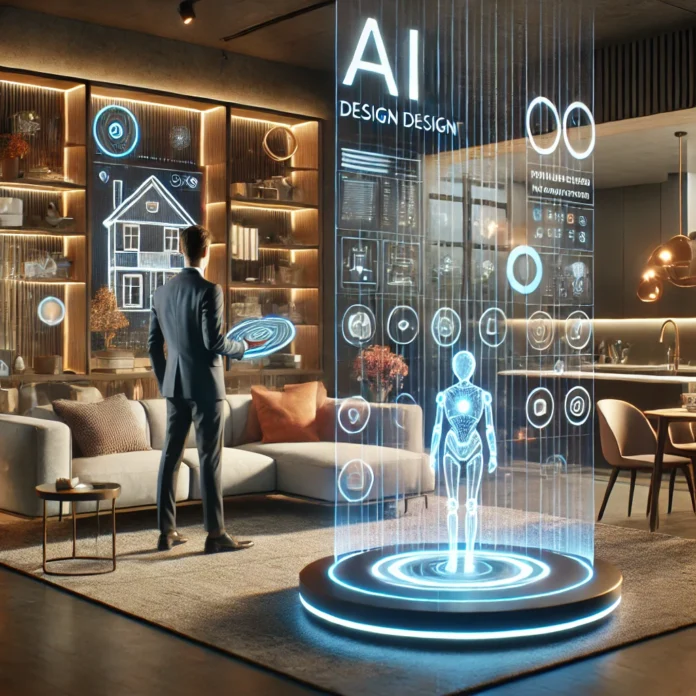Artificial Intelligence (AI) is revolutionizing interior design by enhancing creativity, efficiency, and personalization. From AI-driven design recommendations to virtual room simulations, technology is reshaping how spaces are planned, decorated, and optimized. Whether for homeowners, architects, or professional designers, AI-powered tools are making interior design more accessible and precise.
1. AI-Powered Design Recommendations
AI-driven platforms can analyze user preferences, room dimensions, and existing decor to suggest optimal design solutions. These tools help users visualize different styles and layouts before making real-world changes.
- Modsy and Planner 5D use AI to generate 3D interior design concepts based on user inputs.
- Houzz and Foyr Neo provide AI-driven recommendations for furniture placement, color schemes, and decor.
- AI-powered Pinterest boards analyze aesthetic preferences and suggest curated design inspirations.
By leveraging AI, designers and homeowners can experiment with styles and layouts without committing to costly purchases upfront.
2. Virtual Reality (VR) and Augmented Reality (AR) in Design
AI-enhanced AR and VR tools allow users to visualize and modify room designs in real-time. These technologies provide immersive experiences that help clients and designers collaborate more effectively.
- IKEA Place and Wayfair’s AR tool let users place virtual furniture in their actual space using smartphone cameras.
- SketchUp and Roomstyler provide 3D renderings to preview different design elements.
- AI-powered real-time modifications enable users to swap furniture, adjust lighting, or change color palettes instantly.
These AI-driven innovations reduce trial and error, ensuring better design decisions before execution.
3. AI in Space Optimization and Smart Layouts
AI algorithms analyze floor plans and suggest the most efficient space utilization. This is particularly useful for small apartments, offices, and commercial interiors.
- Spacemaker AI (by Autodesk) helps architects optimize space planning in real estate projects.
- RoomGPT and Homestyler AI suggest furniture arrangements based on available space and functionality.
- AI-driven Feng Shui apps analyze room layouts for energy flow and harmony.
With AI, designers can maximize functionality while maintaining aesthetics, ensuring every inch of space is used effectively.
4. Smart Color Selection and Material Choices
Choosing the right color combinations and materials can be challenging, but AI simplifies the process by analyzing trends, lighting conditions, and personal preferences.
- Dulux’s Visualizer AI and Sherwin-Williams ColorSnap suggest color palettes based on room images.
- AI-powered material selectors help users choose sustainable, cost-effective, and durable materials.
- Machine learning algorithms predict how different materials and textures will look under various lighting conditions.
These AI capabilities help designers make informed choices, reducing costly mistakes and enhancing visual appeal.
5. AI-Powered Smart Homes and Automation
AI is integrating interior design with smart home technology, creating intelligent and responsive living spaces.
- Google Nest and Amazon Alexa adjust lighting, temperature, and ambiance based on user behavior.
- AI-driven lighting systems like Philips Hue optimize brightness and color temperature for different moods.
- AI-powered furniture, like robotic beds and modular smart sofas, adapts to different needs and spaces.
With AI, homes are becoming more intuitive, comfortable, and energy-efficient.
6. Sustainable and Eco-Friendly AI Designs
AI plays a key role in sustainable interior design by recommending energy-efficient solutions and eco-friendly materials.
- AI-powered energy management systems optimize heating, cooling, and lighting to reduce carbon footprints.
- BIM (Building Information Modeling) software uses AI to recommend sustainable building materials.
- AI-based waste reduction tools suggest ways to repurpose or recycle furniture and decor.
By incorporating AI, interior design is moving towards sustainability without compromising aesthetics.
7. The Future of AI in Interior Design
AI is not replacing human designers but augmenting their creativity and efficiency. As AI technology advances, we can expect:
- More intuitive AI design assistants that learn user preferences and provide personalized recommendations.
- AI-generated mood boards and interactive design platforms for real-time collaboration.
- Smarter homes with adaptive furniture and AI-driven customization.
AI is transforming interior design into a seamless blend of functionality, beauty, and technology. Whether for professional designers or DIY home decorators, AI is making design smarter, faster, and more personalized than ever before.





